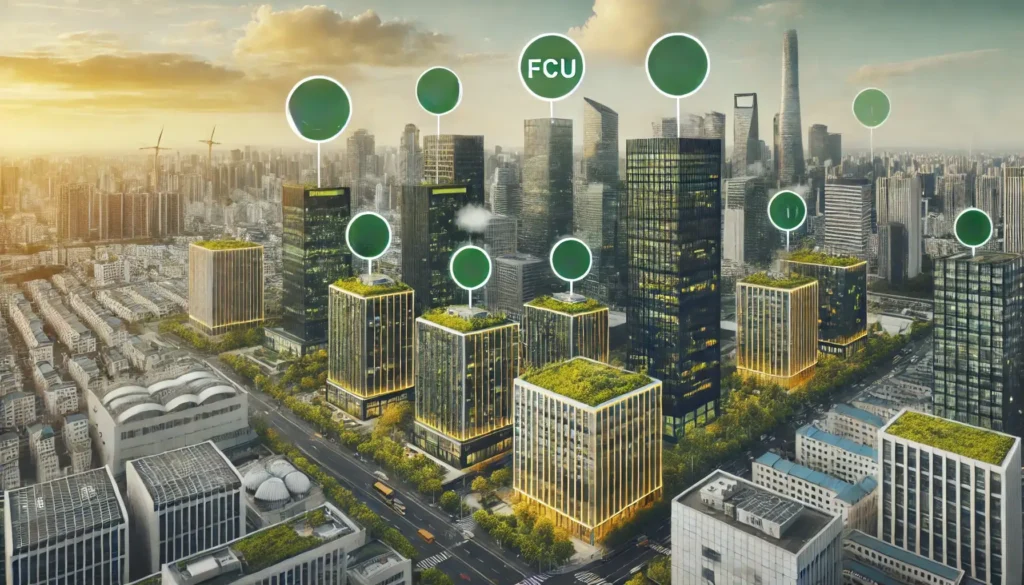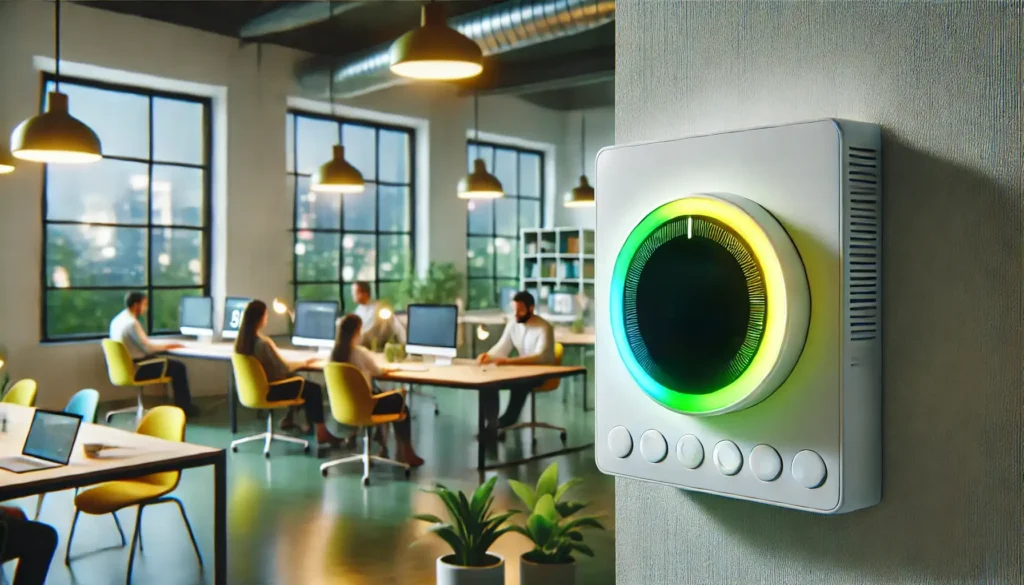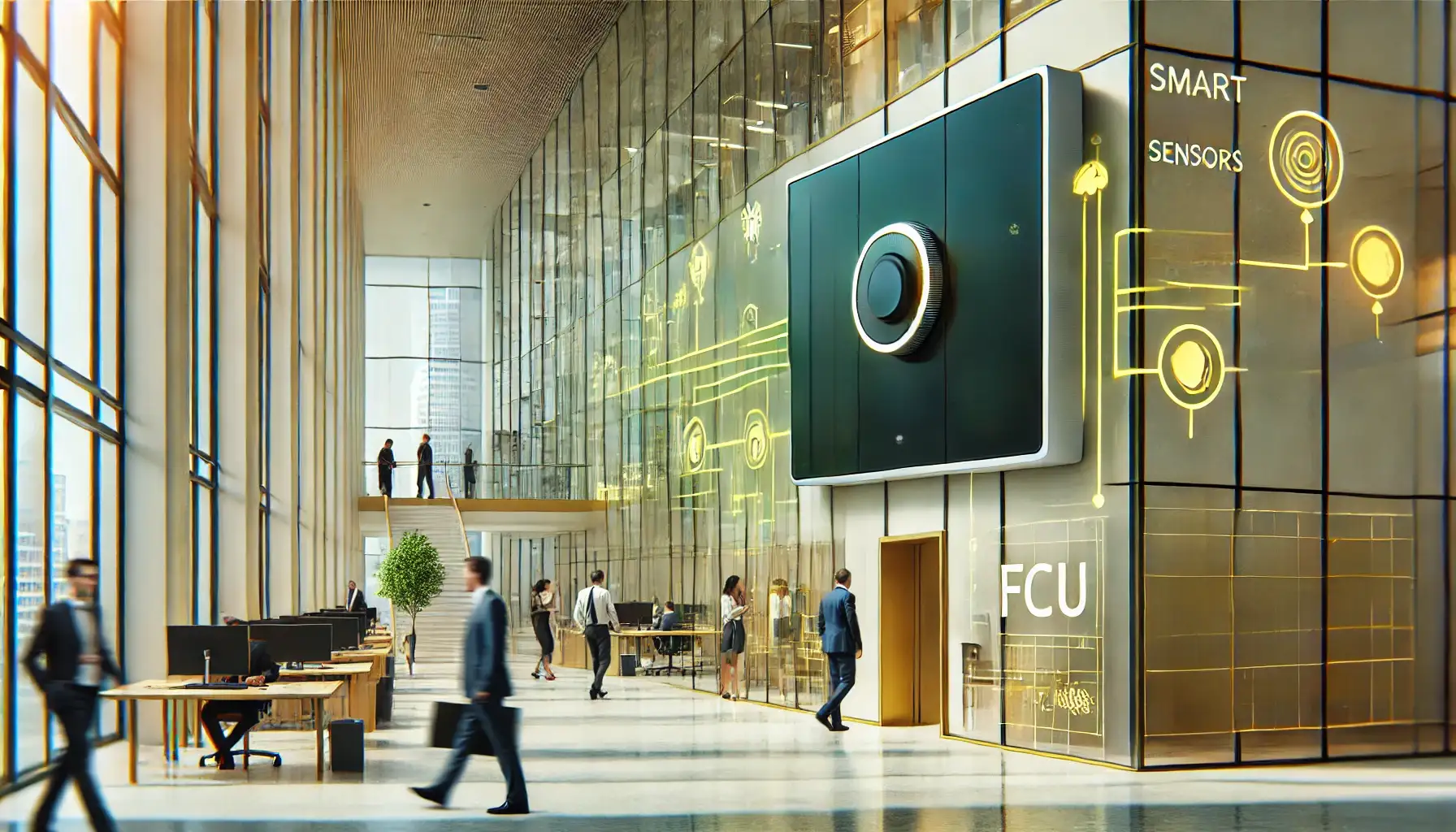The building industry plays a major role in the world’s energy consumption and carbon emissions. More over 50% of the world’s power is used in buildings, which account for more than 30% of total energy use. Furthermore, one-third of the world’s carbon emissions are attributable to the building industry. Heating and cooling systems account for 70–80% of the total energy used in this industry, making them significant energy users.
These startling numbers draw attention to a crucial problem: conventional approaches to building energy management are insufficient and lead to excessive energy loss and negative environmental effects. One potential answer to this urgent issue is the integration of smart technology, such as Internet of Things (IoT) devices and smart thermostats. Smart Fan Coil Unit (FCU) thermostat controls can greatly improve energy efficiency and lower total consumption by streamlining the operation of FCU systems. This blog post examines how energy management can be transformed by smart FCU thermostat controls, opening the door to a more sustainable future.

The Impact of Lacking Smart FCU Control
1.Ineffective Use of Energy
Energy usage in buildings becomes extremely inefficient in the absence of effective FCU controls. The inability of traditional thermostats to adjust heating and cooling in response to occupancy and ambient variables in real-time results in wasteful energy use and increased utility costs. Furthermore, these systems usually run on manual settings or predetermined schedules, which prevents them from adapting to the changing needs of the facility. As a result, energy is squandered when neither heating nor cooling is required, which raises expenses even more.
2. Enhanced Emissions of Carbon
Increased carbon emissions are directly caused by ineffective energy management. Structures without intelligent FCU systems frequently utilize excessive amounts of energy, which raises their carbon footprint. Considering that the building industry contributes significantly to global carbon emissions, this is especially problematic. The issue of greenhouse gas emissions is made worse by the growing reliance on fossil fuels as a result of rising energy demand. As a result, there is a significant environmental impact that exacerbates environmental deterioration and contributes to climate change.
3. Poor Indoor Air Regulation
It can be difficult for traditional FCU systems to maintain constant and ideal indoor air quality. This covers not simply temperature but also CO2 concentration, humidity, and other aspects of air quality. Inadequate control can produce hot and cold areas, extreme dryness or humidity, and high CO2 levels, all of which can lower occupant comfort and productivity and create unhygienic indoor settings. Variations in indoor air quality can also make health problems like allergies, asthma, and exhaustion worse. On the other hand, smart FCU controls may dynamically change parameters in response to real-time data, guaranteeing a more stable and hygienic indoor environment. By preventing overcooling or overheating, this all-encompassing method improves total energy efficiency and improves occupant comfort and well-being.
Effects of Smart FCU Thermostat Control
Real-Time Adjustments: Smart FCU controls use sensors to monitor occupancy and environmental conditions, adjusting heating and cooling in real time to avoid unnecessary energy use. It can make the most accurate decision on how the HVAC system should work by considering not only indoor data but also outdoor weather data.
Energy Optimization Algorithms: As well as controlling the HVAC system based on real-time data, advanced algorithms optimize energy consumption by predicting and adjusting to peak usage times, reducing overall energy consumption. These systems learn from usage patterns and adapt settings to maintain optimal comfort levels while minimizing energy use.
Scheduled Operations: By arranging the command system ahead of time in accordance with the building’s usage hours, smart FCU thermostat control systems automatically carry out tasks like turning on and off, adjusting a certain mode and temperature, and selecting them on the calendar at predetermined times. This way, issues like energy waste from systems left open or decreased comfort from systems forgotten to be closed would not arise.
Precision Control: Smart FCU Thermostat systems provide precise temperature control by adapting to real-time and historical data, ensuring consistent and comfortable indoor climates. With the algorithms it uses for this purpose, it creates the desired environment within the desired temperature range, consuming minimum energy.
Improved Air Quality: With Smart FCU Thermostat controls, you can remotely control not only the temperature of the environment but also different air quality parameters such as humidity rate and CO2 level by controlling not only the set temperature but also the mode of the HVAC systems (heat, cool, fan, dry etc.) and fan speeds.

Sensgreen Smart Building Platform: Transforming Energy Management and Comfort with Smart FCU Thermostat Control
The Sensgreen Smart Building Platform‘s extensive feature set and sophisticated smart FCU thermostat management help to solve the pressing problems of excessive energy use, rising carbon emissions, and poor indoor air quality. Building managers may monitor and modify HVAC systems remotely with the help of the platform, assuring optimal performance and energy efficiency even while they’re not on-site.
With real-time data tracking, you may make dynamic modifications to maintain a comfortable and healthy interior atmosphere by continuously monitoring environmental parameters like temperature, humidity, and CO2 levels. With the help of this data, precise climate management can be achieved through tailored automation scenarios based on sensor readings.
One notable feature is the alarm system. When criteria are exceeded, users can set up warnings for unfavorable conditions, such excessive energy use or bad air quality, and receive messages by SMS, email, or WhatsApp. This proactive strategy aids in keeping interior conditions at their best, reducing energy waste, and quickly resolving concerns.
Scheduled procedures, such as adjusting modes and temperatures, turning systems on and off, and setting certain parameters at predefined times, can be automated with the help of the timetable feature. This guarantees that energy is not lost while the space is empty and that comfort is maintained when required.
Moreover, numerous buildings, rooms, and devices may be managed from a single interface using the Sensgreen Smart Building Platform. The implementation of energy-saving measures across locations is made simpler by this unified control, which streamlines management. Advanced algorithms and sensor data integration improve energy use without sacrificing comfort, resulting in significant cost savings and a smaller environmental impact.
Sensgreen Smart Building Platform uses these elements to provide significant energy savings while improving tenant comfort and convenience. Due to its lower energy costs and reduced environmental impact, it is a very useful instrument for modern building management that offers both financial and ecological benefits.



